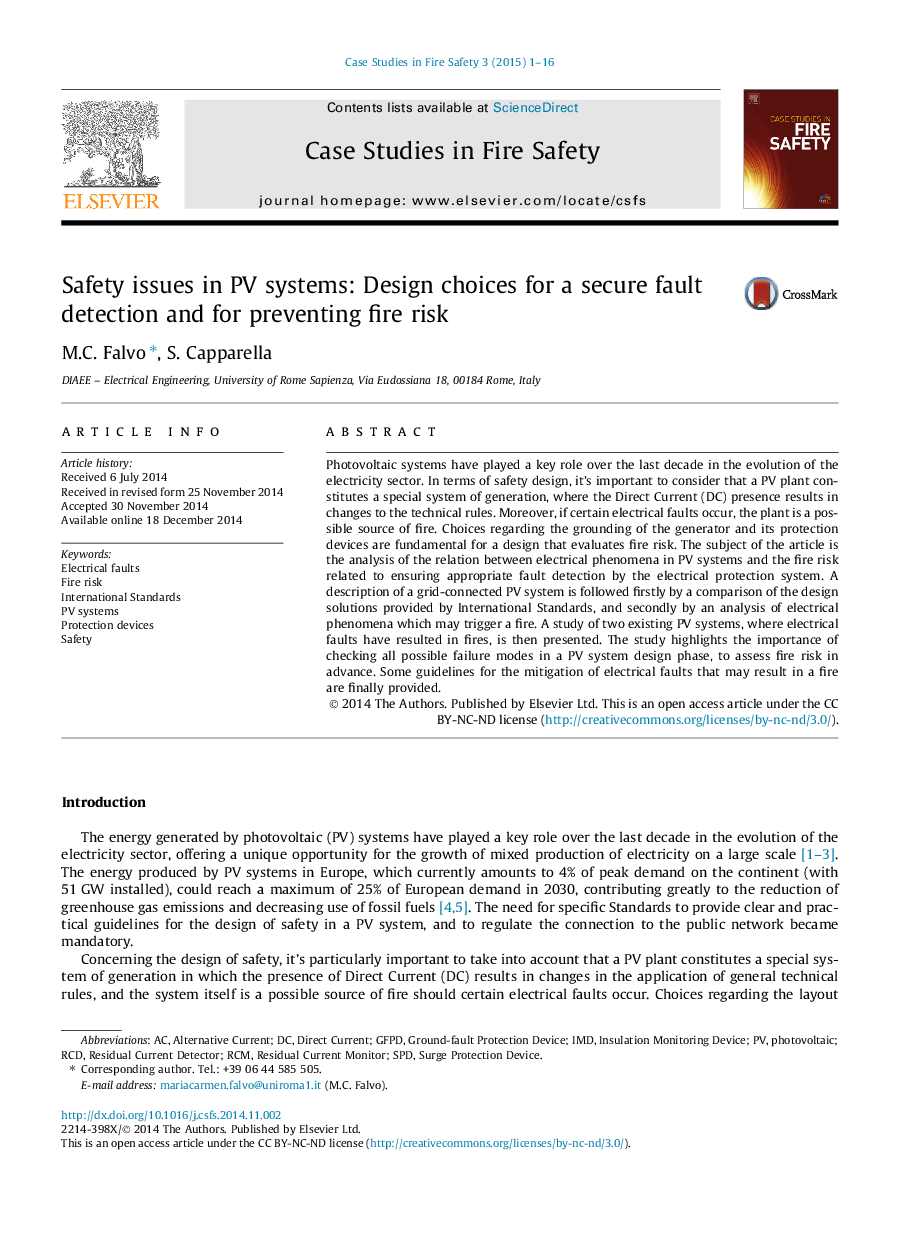| Article ID | Journal | Published Year | Pages | File Type |
|---|---|---|---|---|
| 250575 | Case Studies in Fire Safety | 2015 | 16 Pages |
•A PV plant is a special generation system possible source of fire if certain electrical faults occur.•The choices on layout, DC negative pole grounding and protections are fundamental.•A comparison of design solutions provided by International Standards is presented.•An analysis of two existing PV systems, where an electrical fault resulted in a fire, is exposed.•Guidelines for the mitigation of specific electrical faults that may result in a fire are provided.
Photovoltaic systems have played a key role over the last decade in the evolution of the electricity sector. In terms of safety design, it’s important to consider that a PV plant constitutes a special system of generation, where the Direct Current (DC) presence results in changes to the technical rules. Moreover, if certain electrical faults occur, the plant is a possible source of fire. Choices regarding the grounding of the generator and its protection devices are fundamental for a design that evaluates fire risk. The subject of the article is the analysis of the relation between electrical phenomena in PV systems and the fire risk related to ensuring appropriate fault detection by the electrical protection system. A description of a grid-connected PV system is followed firstly by a comparison of the design solutions provided by International Standards, and secondly by an analysis of electrical phenomena which may trigger a fire. A study of two existing PV systems, where electrical faults have resulted in fires, is then presented. The study highlights the importance of checking all possible failure modes in a PV system design phase, to assess fire risk in advance. Some guidelines for the mitigation of electrical faults that may result in a fire are finally provided.
